To my dear friends in the Philippines—indeed, to each of the 109 million people living in that sprawling archipelago—I would like to say that we Americans have not always been the best allies. Now, it’s true that we helped you kick the Spanish out after 333 years of colonial rule. You rightfully expected that your independence would begin then, in 1898. But no, President Theodore Roosevelt et al. had the paternalistic view that you were somehow not ready. We, Americans and Filipinos, then fought a three-year war among ourselves. With infinitely more firepower, the USA prevailed. You adjusted from “three centuries in a convent” to “50 years of Hollywood.” That idiomatic expression summarizes the country’s colonial history. We were out briefly, you recall, when the Japanese took control. That was some real misery! And who came to your rescue? The Americans, of course. The Battle of Manila, which lasted from February 3 to March 3, 1945, was one of the horrors of World War II. Americans and Filipinos again stood shoulder to shoulder and defeated Tomoyuki Yamashita and his boys; he was hanged on February 23, 1946 inside a prison camp at Los Baños. Finally, mercifully, the Stars and Stripes were lowered while the Pambansang Watawat was raised during an Independence Day ceremony just over four months later.
I realize that President Harry Truman and General Douglas MacArthur had their geopolitical reasons, but it seems quite unfair in retrospect that the USA did so little to rebuild the infrastructure of the Philippines—the same can be said of Korea—but was quite generous with the Japanese, authors of so much death and destruction.
In 1955, President Ramōn Magsaysay issued a proclamation establishing Filipino-American Friendship Day. While still in existence, it is no longer a non-working holiday. In fact, my Filipino friends tell me that it has faded away considerably. One of those friends says in all candor that the American influence in the Philippines becomes less and less every year.
Relations were strained for a long time because of the presence of the Clark and Subic Bay military bases. The atrocious behavior of American soldiers and sailors, and resulting degradation and prostitution of too many Philippine women and girls infuriated the locals. The 21-year rule of President Ferdinand Marcos was noted for its corruption, extravagance and brutality. Marcos, propped up by the Johnson, Nixon, Ford, Carter and Reagan administrations, was forced into exile as the 1986 “People Power” movement reached a crescendo. Part of it was a demand for the Yanks to vacate Clark and Subic Bay, or at least pay substantially more for their use. After much political and diplomatic wrangling, we did so in 1992, shortly after the eruption of Mount Pinatubo left Subic Bay under more than a foot of ash. This was a bold move by the Filipinos, albeit an understandable one. They saw it as a matter of national sovereignty. Presidents Corazon Aquino, Fidel Ramos, Joseph Estrada, Gloria Macapagal Arroyo, Benigno Aquino III and Rodrigo Duterte, to varying degrees, insisted they could do just fine without the Americans acting as their big brothers. But in a cold and hostile world, it helps to have a strong ally—such as the USA.
Much has changed in the past 30 years, the main thing being the growth of Chinese economic and military power. Xi Jinping has made it clear that he intends to dominate the world stage, starting with what the PRC regards as its back yard—the South China Sea. Deng Xiaoping used to say, “Hide your strength and bide your time,” but Xi sees no need to hide or wait any longer. Philippine coast guard ships, fishing boats and small islands have seen the Chinese slowly encroaching, and little could be done but to issue plaintive cries. Vietnam, Brunei, Malaysia and Taiwan share the same kind of long-simmering territorial disputes with China. The South China Sea is vital to international shipping ($3 trillion worth of trade per year, including more than 30% of global maritime crude oil passes through it), and fishing and mineral rights are quite valuable. The Chinese government claims almost the entire sea on the basis of its so-called nine-dash line. While the World Court in The Hague has ruled that claim as invalid, its lack of enforcement power is all too clear to the Chinese who go on with their bullying ways.
Many Filipinos were alarmed by how Duterte cozied up to the Chinese. But even he came to fear their smothering embrace. His successor in Malacañang Palace is Ferdinand “Bongbong” Marcos, Jr., son of the former dictator. I have friends there who are dismayed to realize that they have elected a man who benefitted from his father’s unexplained wealth which ranged from $5 billion to $30 billion. Be that as it may, he successfully revamped the Marcos brand and won 59% of the vote.
I am pleased at how Marcos has taken a—relatively—strong stand against the Chinese. He has to walk a fine line in resisting them, politically and militarily, but more than 80 diplomatic protests have been lodged by the Philippines against China since he took office in June 2022. The obvious resolution has been to turn back to the USA. In early February, not long after he visited Xi in Beijing, Marcos announced that American forces would be allowed to use four sites in addition to the five they had been recycling through since the Enhanced Defense Cooperation Agreement was signed in 2014; the EDCA supplements the Visiting Forces Agreement of 1999. These are not permanent military installations and are far from what formerly obtained at Clark and Subic Bay. My impression is that the Americans belatedly realized that they must be less obtrusive and more respectful of their Filipino allies.
The Chinese response to these developments has been predictable—they don’t like it. Xi and his diplomats have expressed strong opposition to an expanded U.S. military presence in the Philippines, warning of unspecified future repercussions. Call me biased, but I think the Americans qualify as more genuine friends than the Chinese. For example, first on the scene when Typhoon Haiyan hit in November 2013 were the United States Marines. Along with Western aid agencies, they provided much-needed assistance to thousands of injured and homeless people.
If China felt threatened before, you can multiply that with the currently ongoing Balikatan exercises in which 5,400 personnel from the Armed Forces of the Philippines and 12,200 of their American counterparts work together in the fields of maritime security, amphibious operations, live-fire combat exercises, cyber-defense, urban and aviation operations, counterterrorism, humanitarian assistance and disaster relief. This is being done under the observation of the sternly disapproving Chinese. Let them watch and see that the Phil-Am partnership is not dormant, it is thriving. There have been quiet discussions about having Subic Bay (now notorious for technical and agricultural smuggling, and prostitution just outside the gates is even more omnipresent than before) returned to service as a U.S. military facility. Washington has warned Beijing repeatedly that its mutual-defense treaty with the Philippines would call for a vigorous response in case of an attack. More likely, of course, is a Chinese military invasion of Taiwan. If that occurs, both the USA and the Philippines have vowed to be actively involved in repelling it.
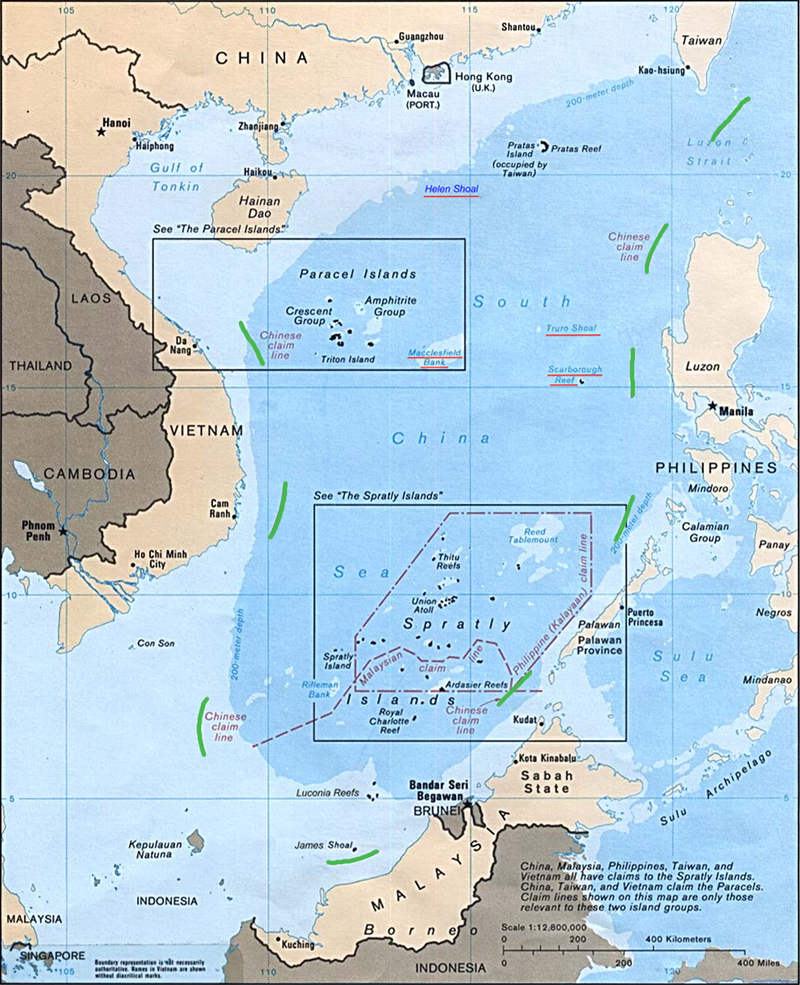
China and its “nine-dash line”….
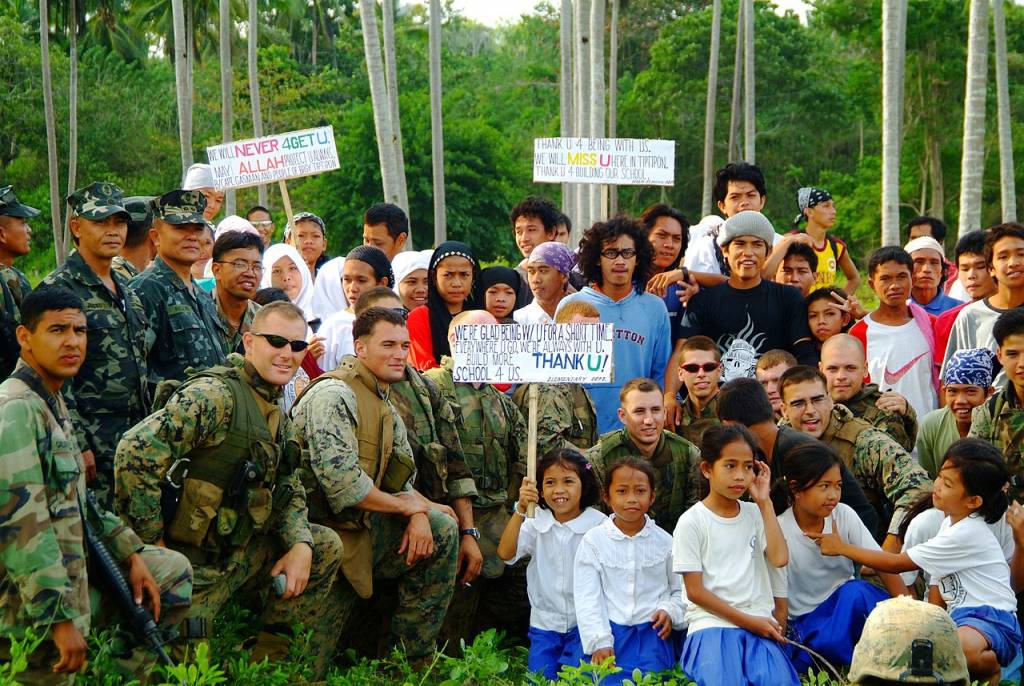
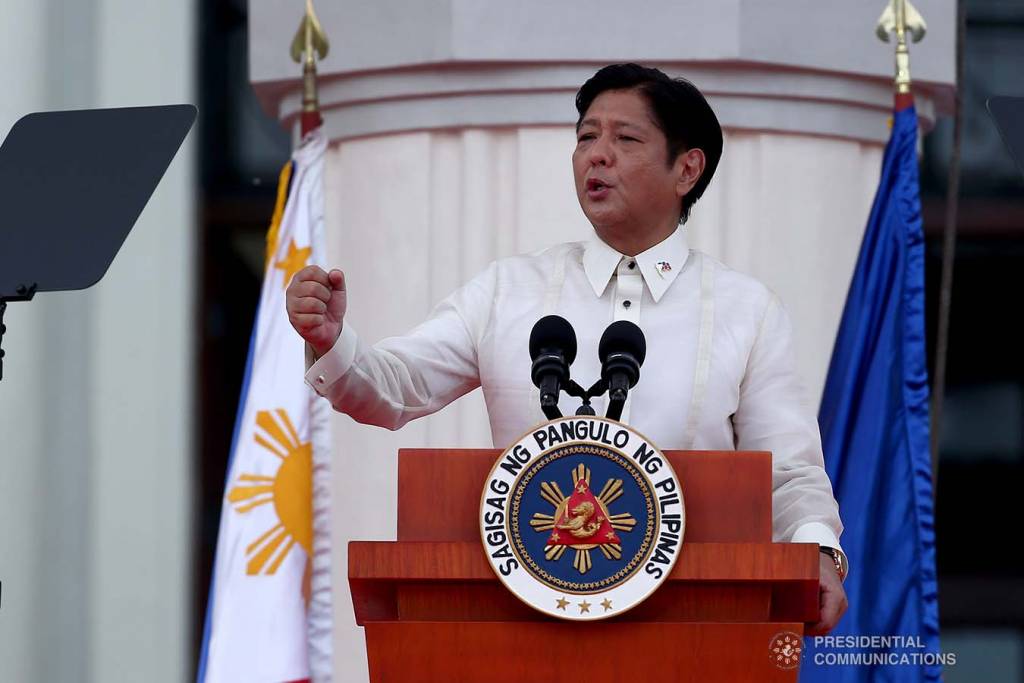
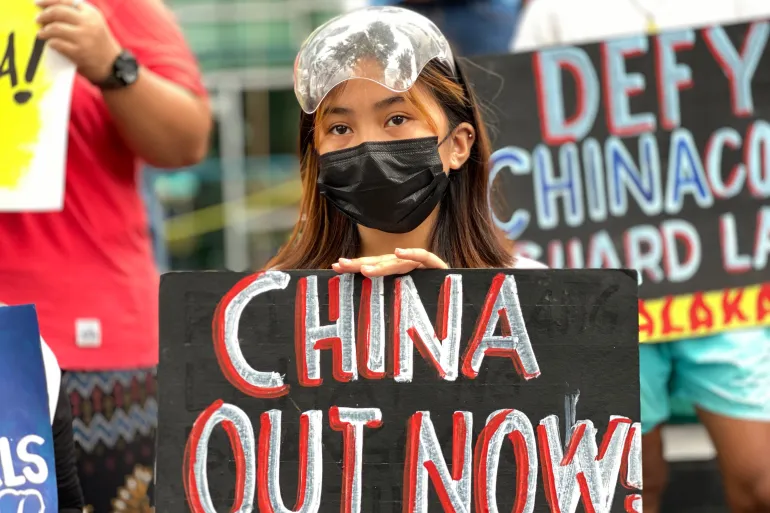
“China out now” is right….
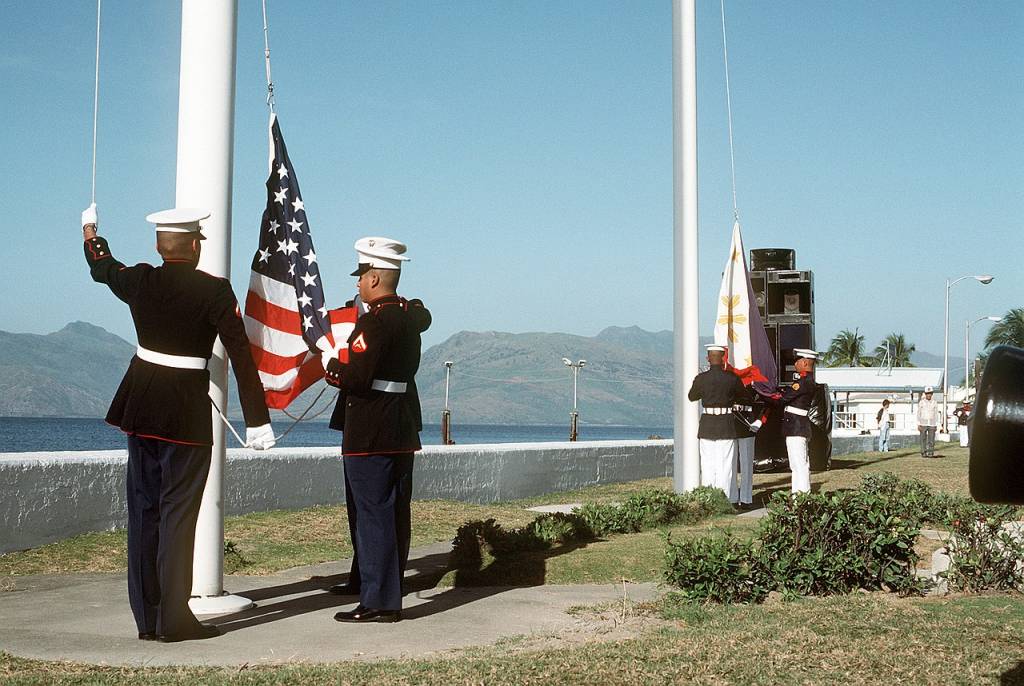
At Subic Bay in 1992, the American flag came down and the Philippine flag went up….


10 Comments
If China attacks Taiwan, the US will certainly retaliate and the third world war will begin.
Glad to have info about Philippine and you write so clear about all.
Thank you for reading it, Elly…the Chinese will get a bloody nose if they attempt to take over Taiwan…that is my view
Nice article, Richard.
thank you, Mike
3
As a Filipino citizen, reading this article about the historical relationship between the United States and the Philippines causes me to reflect deeply. It encourages us to reflect on the complexities and nuances of our common history with the United States and how it has influenced our country.
First and foremost, we acknowledge the United States’ help in our fight for independence from Spanish colonial rule. It is critical to recognize that the fight for liberty was a collaborative endeavor including both Filipinos and Americans. The sacrifices made by both nations are exemplified by the camaraderie displayed during the Battle of Manila and the defeat of Japanese forces.
This, however, highlights the inadequacies and obstacles we have encountered in our relationship with the United States. It emphasizes the paternalistic views that slowed our progress toward self-government and the resulting conflicts. The legacy of American military outposts such as Clark and Subic Bay raises worries about the detrimental social impact and exploitation faced by some Filipino communities.
Furthermore, I recognize the need to critically examine the level of support and assistance extended to us, particularly in the aftermath of World War II, because the unequal treatment compared to Japan, a country responsible for immense destruction, raises valid questions about fairness and fairness in international relations.
As I consider the shifting dynamics of the Filipino-American connection, I realize that our country has the ability to establish its independence and stand on its own. The diminishing prominence of American influence, as well as the desire to be less reliant on foreign factors, demonstrate our rising confidence in our capacity to manage the world stage on our own.
We are reminded of the significance of strong partnerships in the face of increasing threats posed by China’s ascent. The ongoing efforts to deepen ties with the US show an understanding of the importance of strategic partnerships in countering external challenges. We must, however, guarantee that these relationships are aligned with our national interests and emphasize the well-being of our people.
Finally, this serves as a wake-up call to Filipinos that we must play an active role in defining our country’s destiny. We must be critical of our history, learn from it, and construct our own route ahead based on our own objectives and beliefs. We can overcome problems and achieve a thriving and independent Philippines only through self-determination, togetherness, and a clear grasp of our principles.
Thank you for this comment, DD. The Phls can stand on its own, and yet you must be realistic. China is pushing you around and taking you one island at a time. You most certainly need a strong ally like the USA.
Richard:
One of your best ever! I feel like I’m in a history class and you are the instructor!
Great research and attention to detail, as always. I certainly learned a lot about the Philippines. I was once in Manila and my memory serves me as how passionate the Filipinos are in so many ways.
thanks,
Rex
Rex, your words are much appreciated!
If China does attack, omg, there will be another war. I didn’t know about Phili-Am partnerships. I agree with you China will get a bloody nose. Thank you for all the information and time and research you put into each article. Also, how you’re doing well. Sorry for the delay.
Janene, better late than never! I am hoping and wishing that the Chinese will think twice and then thrice about attacking Taiwan or taking more of the Philippine islands.
Add Comment